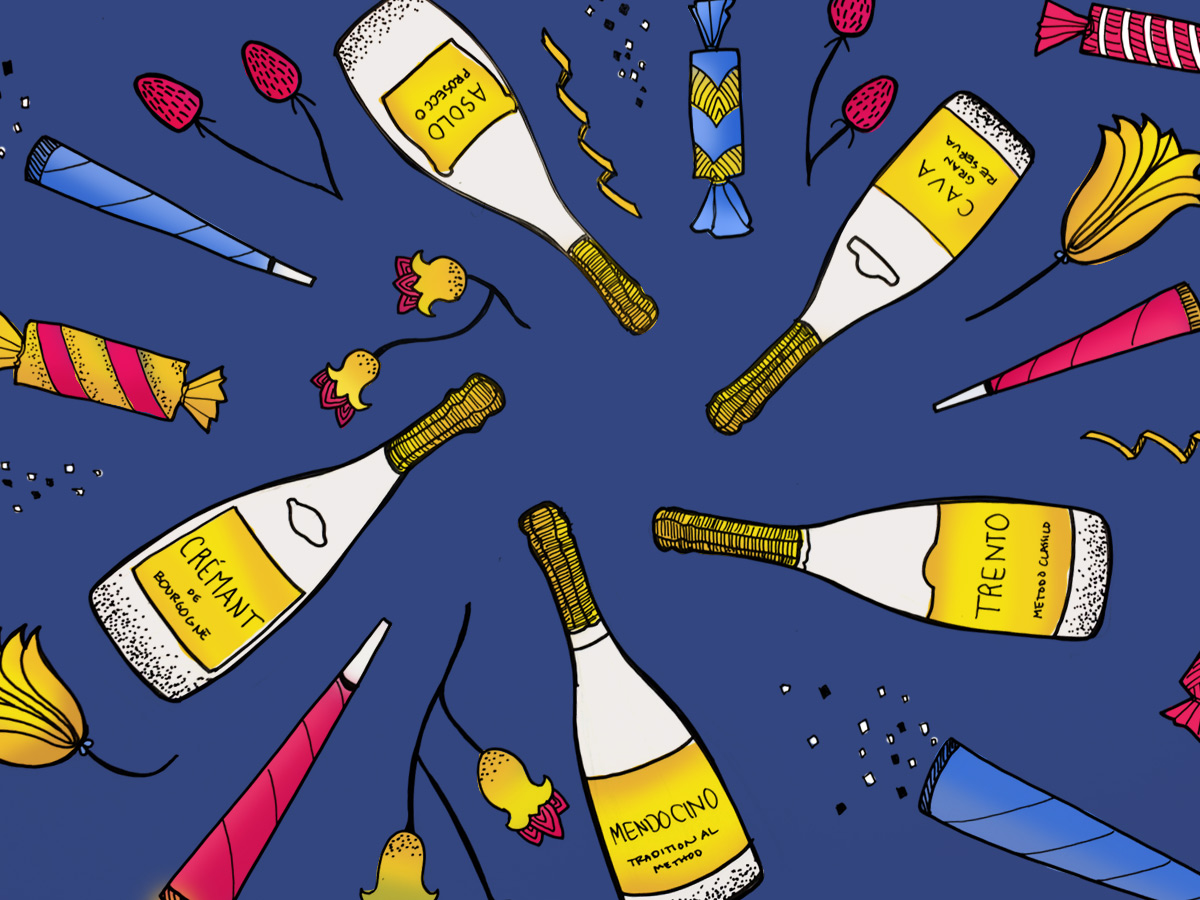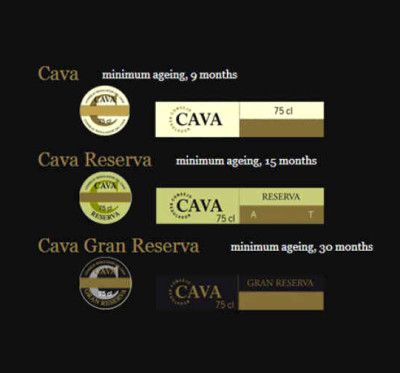There is nothing wrong with Champagne, unless of course you happen to be on a budget. If this is you, then the $600–$750 case price to stock up on decent Champagne for the holidays is not that fun to swallow. Fortunately, there are many sparkling wines that will fit neatly into your holiday drinks budget and they are absolutely fabulous.
I’d like to introduce you to several amazing alternatives to Champagne, including Reserva and Gran Reserva Cava, the DOCGs Prosecco, several Crémant wines from France, Metodo Classico from Italy, and finally, American sparklers made with the traditional Champagne method. Yes, there’s great bubbly everywhere!
Amazing Sparkling Wines That Won’t Break Your Budget
Champagne is a small wine region in France that exclusively produces sparkling wines. To find great alternatives to Champagne, we’ll be taking a look at a handful of other regions that focus on exceptional sparkling wines including:
- Cava from Spain
- Prosecco from Valdobiaddene, Italy
- Crémant from France
- Metodo Classico from Italy
- American Sparkling Wines
CAVA Reserva and Gran Reserva
Cava is Spain’s answer to Champagne. Most Cava comes from Catalonia in Northern Spain where the local grapes of Macabeo, Paralleda and Xarello are blended together using the same winemaking method as its French counterpart. The result is a dry, elegant and fruity sparkling wine that is well worth its sub-$10 price point.
What’s little known about this wine is that Cava has several higher tier quality levels that are technically on par with Champagne and even vintage Champagne. The region also allows for the use of Chardonnay to be blended into this wine, which is the same variety used in Blanc des Blancs. You’ll note that several of the top Cava producers use higher proportions of Chardonnay in their best wines.
What to look for
- Reserva Cava: This wine requires 15 months of aging–the same requirement for non-vintage Champagne.
- Gran Reserva Cava: This wine is required to be from a single vintage (and is vintage dated) and must age for at least 30 months. If you compare this to vintage Champagne at a requirement of 36 months, it’s very close, and you’ll find that many producers will age their wines much longer than the minimum.
Expect to spend: $20
PROSECCO Valdobbiadene Conegliano and Asolo Prosecco
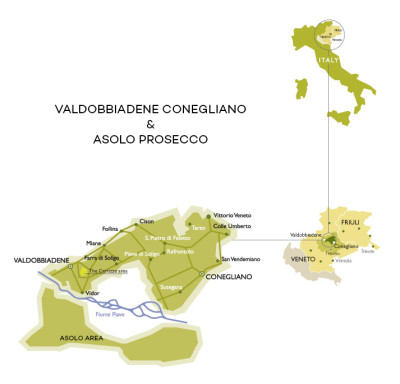
Prosecco comes from the Valdobbiadene (“Val-doe-be-ah-den-aye”) region just north of Venice in Italy. The wine is made differently than Champagne and, because of this, the bubbles in Prosecco are lighter and less persistent. The taste of Prosecco comes from the local Glera grape and it gives the wine perfumed aromas of white peach, meyer lemon, honeysuckle, and creamy vanilla.
While most of us are familiar with easy-drinking Prosecco, there are two high quality production regions that make incredible sparkling wines and they are Conegliano Valdobbiadene DOCG and Asolo Prosecco (aka Colli Asolani) DOCG. What makes these two wine growing districts special is that they’re located on southern-facing hills on opposite sides of the Piave river. The hilly location puts the vineyards above the morning fog and wines are richer and more intensely flavored.
What to look for
Seek out wines from the 2 districts of Valdobbiadene Conegliano and Asolo Prosecco. These 2 areas are quite small, so you can always look for wines labeled Prosecco Superiore, which may tend to be more commercial but have higher quality standards than basic Prosecco and are often very delicious.
Expect to spend: $17
CRÉMANT Alsace, Bourgogne, Limoux and Jura
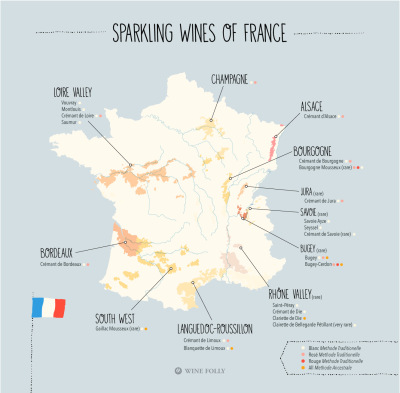 Sparkling wines grown outside of the region of Champagne produced with the same winemaking method are typically labeled Crémant. There are over 20 different regions that produce sparkling wine outside of Champagne that are remarkably more affordable and often as delicious.
Sparkling wines grown outside of the region of Champagne produced with the same winemaking method are typically labeled Crémant. There are over 20 different regions that produce sparkling wine outside of Champagne that are remarkably more affordable and often as delicious.
What to look for
- Crémant de Bourgogne: Just south of Champagne is the region of Burgundy (“Bourgogne”). The region is already famous for its Chardonnay and Pinot Noir, but their Crémant wines fly under the radar. It’s definitely the secret to the region, because these wines are made with the same amazing Chardonnay and Pinot Noir grapes either as a rosé or white sparkling wine.
Expect to spend: $15
- Crémant de Jura: Across the valley from Burgundy is the region of Jura which makes quite a bit of tasty Chardonnay wine that not too many people know about. The white sparkling wines of the region contain at least 50% Chardonnay and the rosé wines are made with Pinot Noir and the region’s specialty: Poulsard.
Expect to spend: $22
- Crémant de Limoux: Along the French Riviera is the Languedoc-Roussillon region and within that region is an area producing delicious white sparkling wines made with Chardonnay and the regional specialty: Mauzac.
Expect to spend: $15
- Crémant d’Alsace: Along the German border next to the Vosges mountains is the small region of Alsace. Known more famously perhaps for their delicious dry Riesling, the region also puts out fantastic Crémant wines. The rosé is required to be 100% Pinot Noir and the white sparkling wine is made with the regional grapes of Pinot Blanc, Pinot Gris, Chardonnay and Pinot Noir.
Expect to spend: $18
METODO CLASSICO Franciacorta, Trento, Oltrepo
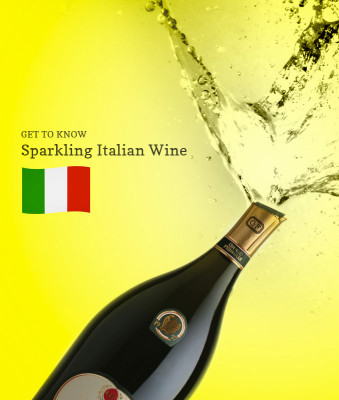
Prosecco dominates the sparkling wine market in Italy, but there are many fine sparkling wines made in Italy using the traditional Champagne method. In Italy, you’ll often find the term Metodo Classico on the label to indicate this style of wine. By the way, it’s also common to find these wines labeled as Spumante which is the Italian term for sparkling wine.
What to look for
- Franciacorta: A wine labeled after the region in the northern part of Lombardy that is known for its white sparkling wines made of Pinot Blanc and Chardonnay.
Expect to spend: $20
- Trento: A wine labeled after the region in an alpine valley north of Verona famous for its sparkling wines of Chardonnay and Pinot Nero (Pinot Noir)
Expect to spend: $15
- Oltrepo Pavese: A region in the southern part of Lombardy that is known for still wines of Pinot Noir. They also make excellent sparkling wines of Pinot Nero in either a rosé or blanc des noirs (“white of black”) style.
Expect to spend: $35
AMERICAN BUBBLY Sonoma, Mendocino and Oregon
The deliciousness of American wine matched with the technical finesse of the Champagne method brings us American sparkling wines. Since US winemakers have used Champagne as a model for their sparkling wines, you’ll find them to be primarily made with Chardonnay and Pinot Noir grapes. Because these are grapes best suited for cooler-climate growing regions, the best places to look for American bubbly wines tend to be in Sonoma, Mendocino and, of course, Oregon.
What to look for
When buying American sparkling wines look into what grapes were used and how long the wine was aged. Higher quality producers will typically use Pinot Noir and Chardonnay grapes and ferment their wines in oak, then age them for about a year. The longer the wine ages, the more nutty and rich it will taste.
Expect to spend: $25
How to Open Champagne Properly
If you’re not confident opening sparkling wines, here’s a trick on how to open Champagne safely.
How to open Champagne safely every time

